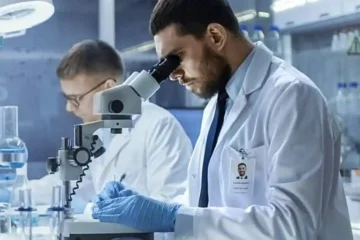Explorer les avantages des cellules souches dans la récupération de la paralysie induite par un accident vasculaire cérébral
Accident vasculaire cérébral, a leading cause of disability worldwide, often results in paralysis due to damage to the central nervous system. Conventional therapies for stroke-induced paralysis have limited efficacy, prompting the exploration of novel approaches. Thérapie par cellules souches has emerged as a promising strategy, offering potential benefits for functional recovery.
Understanding Stroke-Induced Paralysis
Stroke occurs when blood flow to the brain is interrupted, causing damage to brain tissue. Paralysis can result from the destruction of neurons and disruption of neural pathways in areas such as the motor cortex, entraînant une perte de la fonction motrice.
Thérapie par cellules souches: Une approche prometteuse
Cellules souches, avec leur capacité à s'auto-renouveler et à se différencier en plusieurs types de cellules, hold great promise for tissue repair and regeneration. In the context of stroke-induced paralysis, stem cells have demonstrated the potential to promote neurogenesis, enhance synaptic plasticity, et réduire l'inflammation.
Mechanisms of Stem Cell Action in Paralysis
Les cellules souches exercent leurs effets thérapeutiques par divers mécanismes:
- Enhancing Neurogenesis and Synaptic Plasticity: Stem cells can differentiate into neurons and glia, contributing to the replacement of damaged brain tissue. They also promote the formation of new synapses, facilitating the reestablishment of neural circuits.
- Immunomodulatory Effects of Stem Cells: Les cellules souches possèdent des propriétés immunomodulatrices, suppressing the inflammatory response associated with stroke. En réduisant l'inflammation, they create a more conducive environment for tissue repair and neural regeneration.
Functional Recovery and Motor Improvements
Preclinical studies in animal models have demonstrated that stem cell transplantation can lead to significant functional recovery and motor improvements. Stem cells promote the regeneration of motor neurons, restore neural connections, and enhance motor function.
Clinical Trials and Stem Cell Transplantation
Des essais cliniques sont en cours pour évaluer l'innocuité et l'efficacité de thérapie par cellules souches for stroke-induced paralysis. Même si certaines études ont montré des résultats prometteurs, further research is needed to optimize cell delivery methods and determine the optimal timing and dosage for transplantation.
Considérations éthiques et orientations futures
Thérapie par cellules souches raises ethical considerations regarding the source and type of stem cells used. Future research should focus on developing ethical guidelines and exploring alternative stem cell sources, comme les cellules souches pluripotentes induites (iPSC).
Défis et limites de la thérapie par cellules souches
Malgré sa promesse, thérapie par cellules souches fait face à des défis. These include the potential for tumor formation, rejet immunitaire, and the need for invasive surgical procedures. Ongoing research aims to overcome these limitations and improve the safety and effectiveness of stem cell transplantation.
Études précliniques et modèles animaux
Preclinical studies in animal models have played a crucial role in advancing thérapie par cellules souches for stroke-induced paralysis. These studies have provided insights into the mechanisms of action, optimal cell types, et modes de livraison.
Cell Delivery Methods and Optimization
The choice of cell delivery method is critical for the success of thérapie par cellules souches. Researchers are exploring various techniques, including intracerebral injection, intraventricular infusion, and stem cell-laden scaffolds, to optimize cell delivery and enhance engraftment.
Patient Selection and Prognostic Factors
Identifying appropriate patients for thérapie par cellules souches est essentiel. Prognostic factors, such as stroke severity, lesion location, and patient age, may influence the likelihood of successful recovery.
Thérapie par cellules souches holds great promise for improving functional recovery in stroke-induced paralysis. Même si des défis demeurent, ongoing research is paving the way for the development of safe and effective stem cell-based therapies that can restore motor function and enhance the quality of life for stroke survivors.


